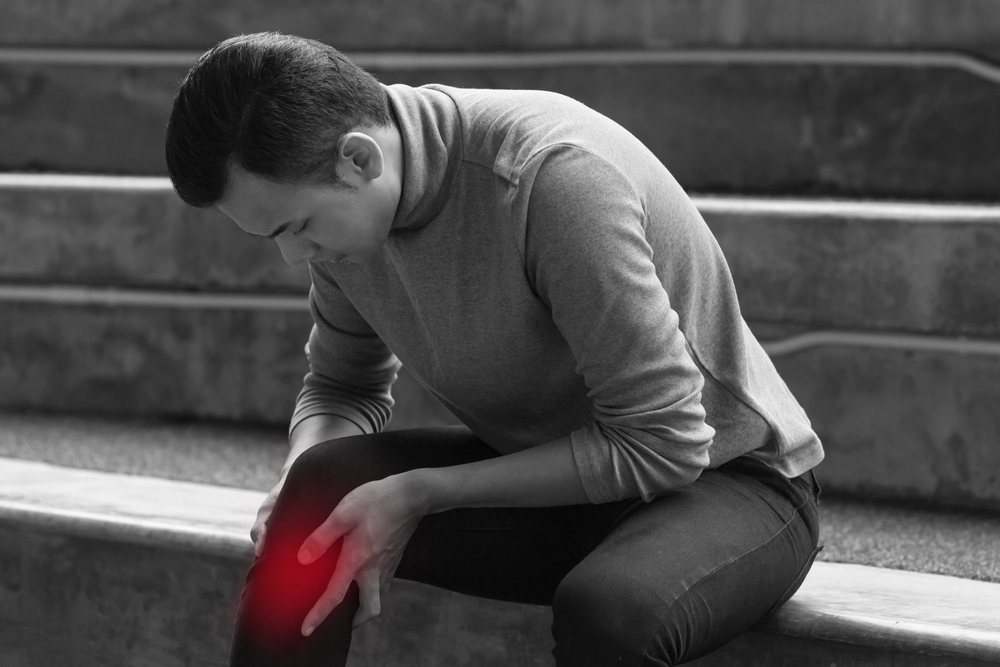Comprehensive Guide to Osteoarthritis: Causes, Symptoms, and Prevention Strategies
This comprehensive guide explores osteoarthritis, detailing its causes, risk factors, and common symptoms. It emphasizes prevention strategies like weight management, strengthening muscles, and maintaining joint alignment. Understanding genetic, age-related, and lifestyle influences aids in early detection and effective management, helping individuals improve joint health and quality of life. The article offers insights into preventing joint degeneration and managing symptoms for those affected by OA.

Comprehensive Guide to Osteoarthritis: Causes, Symptoms, and Prevention Strategies
Understanding Osteoarthritis and Its Contributing Factors
Osteoarthritis (OA) is a prevalent form of arthritis that primarily affects the joints, leading to pain, stiffness, and decreased mobility. It is a degenerative joint disease that results from the breakdown of cartilage—the smooth tissue that cushions bones within joints. Understanding the diverse factors that influence the development of OA is crucial for prevention, management, and treatment planning. The risk factors associated with osteoarthritis can be broadly categorized into controllable local factors, systemic controllable factors, and unchangeable systemic factors, each playing a significant role in disease progression.
Local controllable factors include aspects like muscle strength, physical activity levels, joint injuries, joint alignment, and discrepancies in leg length. Optimizing these local factors through targeted interventions can significantly contribute to reducing OA risk or slowing its progression. For example, strengthening muscles around joints can improve stability and absorb remaining stress, potentially delaying cartilage deterioration.
Systemic controllable factors involve lifestyle choices such as maintaining a healthy weight, adhering to a balanced diet rich in essential nutrients, and managing metabolic health. Addressing these factors can mitigate systemic mechanisms that exacerbate joint degeneration. For instance, managing obesity not only relieves excessive pressure on weight-bearing joints but also reduces inflammatory markers that can intensify cartilage breakdown.
Unchangeable systemic factors include inherent attributes like age, gender, genetic predisposition, and ethnicity. Although these factors are non-modifiable, understanding their influence helps in identifying at-risk populations and tailoring preventative strategies accordingly.
1) Age
Age is one of the most significant risk factors for osteoarthritis. As individuals age, the cumulative wear and tear on joints increase, leading to cartilage degeneration. Older adults, particularly those between 60 and 64 years, are more susceptible to OA due to naturally occurring changes such as decreased elasticity of joint tissues, reduced capacity for cartilage repair, and increased bone remodeling activity. Furthermore, aging is associated with higher levels of reactive oxygen species, which can damage joint cells and accelerate degenerative processes.
2) Biological sex
Gender differences markedly influence osteoarthritis risk and severity. Studies indicate that women tend to experience higher incidences of OA, especially affecting the hands, feet, and knees. Post-menopausal women are particularly vulnerable, suggesting a hormonal link, possibly due to decreased estrogen levels that play a protective role for joint tissues. Differences in bone density, joint laxity, ligament strength, neuromuscular control, and joint biomechanics also contribute to gender disparities in OA prevalence and symptom severity.
OA has a strong hereditary component. Over half of all cases are believed to involve genetic factors, with specific genes identified on certain chromosomes, such as 2q, 7q22, and 11q. These genetic variations can influence cartilage integrity, bone density, and inflammatory responses, predisposing individuals to develop OA earlier or with greater severity. Additionally, younger adults may develop OA due to previous injuries, a form known as post-traumatic osteoarthritis, where joint trauma accelerates cartilage degeneration.
3) Obesity
The influence of obesity on osteoarthritis is profound, particularly concerning weight-bearing joints like the knees and hips. Excess weight increases mechanical stress on joints, hastening cartilage wear. Epidemiological data reveal that for every 5-unit increase in Body Mass Index (BMI), the risk of developing knee OA rises by approximately 35%. Conversely, weight loss can significantly decrease this risk; losing about 5 kilograms (11 pounds) can reduce the likelihood of knee OA by half. Interestingly, obesity also impacts hand OA, possibly through systemic metabolic and inflammatory mechanisms, highlighting the complex relationship between body weight and joint health.
4) Nutrition and Dietary Factors
Nutrition plays a vital role in maintaining joint health. Deficiencies in vitamins D, C, and K have been linked to increased susceptibility to OA. Vitamin D is essential for maintaining healthy bone and cartilage tissue, although its precise role in OA prevention remains under investigation. Vitamin C, an antioxidant, helps combat oxidative stress that damages cartilage cells, and higher intake levels are associated with slower OA progression. Proper nutrition supports tissue repair and reduces systemic inflammation, both crucial for joint health.
5) Occupational and Repetitive Joint Use
Jobs or recreational activities involving repetitive joint movements, heavy lifting, squatting, or kneeling can increase the risk of OA. Athletes engaged in high-impact sports such as football, basketball, or weightlifting may experience joint injuries that elevate OA risk. However, regular running does not necessarily heighten the risk of hip or knee OA, indicating that the manner, duration, and intensity of activity are important considerations. Preventive measures include ergonomic modifications and lifestyle adjustments to minimize joint strain.
6) History of Joint Injuries
Previous traumatic injuries to the joints, especially the knee, significantly augment the risk of developing osteoarthritis later in life. Common injuries like anterior cruciate ligament (ACL) tears, meniscal damage, or fractures can lead to altered joint mechanics, instability, and cartilage damage. Such injuries often set the stage for early OA, with symptoms typically emerging within a decade of injury. Thus, proper management, rehabilitation, and injury prevention are vital to mitigate long-term consequences.
7) Muscle Strength and Joint Support
Muscular support around joints plays a crucial role in load distribution and shock absorption. Strong, well-conditioned muscles reduce the pressure exerted on joint cartilage and help maintain proper joint alignment. Conversely, muscle weakness enhances vulnerability to joint instability, uneven load distribution, and accelerated cartilage deterioration. Regular strength training, especially targeting core and limb muscles, is recommended to promote joint stability and delay OA onset.
8) Joint Alignment and Biometrics
Proper alignment of joints ensures even distribution of mechanical stress during movement. Misalignment due to congenital deformities, uneven leg lengths, or malocclusion can increase pressure on specific areas of the joint, accelerating cartilage breakdown and subsequent bone damage. Corrective interventions like orthotics, physiotherapy, or surgical procedures can help restore alignment, thus slowing OA progression.
Recognizing the Common Symptoms of Osteoarthritis
Osteoarthritis develops gradually and its symptoms often worsen over time. Early identification of symptoms can facilitate timely treatment, improve quality of life, and minimize joint damage. Typical symptoms include:
Joint pain that worsens with activity or after prolonged inactivity
Persistent ache and discomfort in affected joints
Sensitivity or tenderness upon touch
Stiffness, especially after resting or in the morning
Reduced range of motion, making daily activities challenging
Grinding, creaking, or cracking sounds during joint movement
Formation of bone spurs or osteophytes that can be felt as lumps around joints
Swelling and inflammation resulting from joint irritation
The specific symptoms vary depending on the joint affected. For example, hip OA typically causes pain in the groin or buttock region; knee OA leads to crepitus, swelling, and instability; hand OA may cause swelling, redness, and the formation of nodules. Foot OA often impacts the big toe or ankle joints, impairing mobility. As OA progresses, affected individuals may experience difficulty in walking, standing, or performing routine tasks, with an increased risk of falls and fractures due to compromised joint stability.





